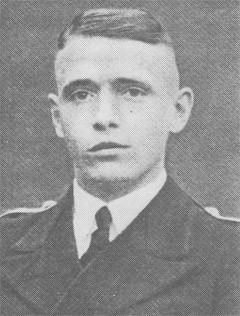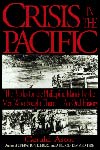The Announcement Board
U-505 to have its original periscope back
Posted on: 14 Sep 2002 at 17:58.This was just submitted to me by a kind reader. I've put it in there in its entirety in case the story disappears from the site of Chicago Tribune.
Lost periscope from German U-boat turns up
By William MullenFor nearly 50 years, a German submarine explored by more than 24 million visitors to the Museum of Science and Industry has been missing one very important part: the periscope Nazis used to watch out for Allied warships.
But next week, the U-boat will be reunited with its original periscope after the prized optical instrument was recovered Thursday from a once-secret naval laboratory in San Diego that is about to be demolished.
Eventually, the museum expects to incorporate the periscope into a new, $23.5 million enclosed exhibit for the U-505 submarine, which has been standing outdoors since it came here in 1954 and is being corroded by the elements.
Shortly after the U-505 was captured during a bloody sea battle with U.S. warships off the coast of west Africa on June 4, 1944, the sub's two periscopes were taken away by military intelligence officials eager to evaluate German submarine optics.
Records of the periscopes' whereabouts disappeared after the war, but it now appears that one of the U-505 periscopes ended up at the San Diego lab in the 1950s. It was installed at the bottom of a giant cold water tank used to experiment with submarine technology and materials suitable for warfare under the planet's polar icecaps.
In the meantime, the museum installed a British navigation periscope on the sub that looks much like its German counterpart. Visitors cannot reach it to look through, but as they exit the sub there is an American periscope of the same vintage they can use to see the museum grounds outside.
The original periscope, to arrive at the museum Tuesday, was saved from the scrapheap thanks to the efforts of Keith Gill, the U-505's curator at the museum, who spent 13 years looking for it.
Working with the Naval Historical Centre in Washington, he put the word out that the museum wanted a German periscope.
"They are pretty hard to come by these days," Gill said. "[One] had gone from a Norwegian navy warehouse to a restaurant in Finland that had bought it, which in turn sold it to two men we could never make a deal with. Another one is in a German ship museum, and a third is owned by the German movie company that used it in filming `Das Boot.'
"Until last year, those three were the only known surviving German periscopes. Nobody knew about this one, and here it was, in the U.S."
Last year, someone among the naval officials in San Diego who were planning the demolition of the old laboratory realized the periscope there was German.
"I got this call last year," said Gill, "from a guy in California saying, `We have a German periscope, and I bet you'd be interested in it.' I about jumped out of my skin."
Jill Vote, spokeswoman for the Navy's Space and Naval Warfare Systems Centre in San Diego, said Navy experts are almost certain the periscope came from the U-505.
"There are gaps in the paper trail," she said, but "from what records they can piece together, the historians feel the timing and circumstances are right that would make this the U-505 periscope."
When the U-505 was commissioned in 1941, it came equipped with two periscopes, one for spotting and attacking enemy ships with torpedoes, the other--the one recovered in San Diego--an aerial-navigational periscope.
"Navigation periscopes could be used in several ways," Gill said. It had better night vision than the attack periscope, he said, but was mostly used to avoid anti-submarine planes and ships.
"You can look straight up into the sky with it, or rotate across the horizon," he said. "When they wanted to surface, the U-boat crews could use the periscope to first look up in the sky for enemy aircraft and search the horizon for unfriendly surface ships."
Gill said he's still looking for the attack periscope, which is operated differently from the navigational type.
"You sit on a bicycle seat and put your feet on pedals on the housing, so that you're straddling it, looking through an eyepiece embedded in a plate on the housing," he said.
The submarine, the only Nazi U-boat captured by the American Navy in World War II, was taken by a sub-hunting task force commanded by a Chicago native, Capt. Daniel Gallery.
Gallery's unit located the U-505 and crippled it with depth charges. Determined to seize the sub before German crew members could scuttle it, the Americans strafed the surfacing ship with machineguns, killing one officer and forcing the rest of the crew to surrender quickly.
The Germans had opened valves to flood the ship in an attempt to sink it, but a five-man American boarding party leapt inside, located the valves and shut them off.
Because of the recovered German code-deciphering books and other secret material, the U-505's capture remained a secret until after the war.
"German technology was highly desirable at the end of the war," said William Manley, a civilian architectural historian for the Navy in San Diego. "People from the Army and Navy scrambled to get it--submarines, periscope optics, V-2 rocketry; all of it was used in our own weapons programs."
In June 1954, the Navy was through with the sub and donated it to the museum. Dedicated as both a war memorial and an exhibit, it was declared a national historic landmark in 1989.
Gill said the museum has not decided how it will use the periscope in its new exhibit. If it is installed back in the sub, it would be barely seen by the public. The museum may build a special exhibit around it outside the sub, he said, allowing people to see the instrument up close.
On Thursday, lab technicians who had worked with the periscope in San Diego were on hand with several dozen Navy and civilian officials to watch workmen extract the instrument, a 25-foot brass tube, from the cold tank's pit.
The Navy, which will retain ownership of the periscope but let the museum keep it as a loan, supplied a special, 50-foot-long protective case it developed for shipping periscopes.
Once scientists were finished studying the optics in the periscope, it, like the sub, was expendable. The periscope was acquired by the late Waldo Lyons, a research physicist who predicted that future warfare would involve submarines prowling under Arctic ice.
Lyons got the Navy to let him build a laboratory in San Diego to look for appropriate technology.
"The laboratory had a huge, 250,000-gallon cold tank in which he could simulate Arctic conditions by chilling the sea water down to 50 degrees below zero," Manley said.
"Once the water froze over on the top, they needed a way to see the material they were studying under the ice. They dug a pit 50 feet deep and 10 feet wide under the tank to house the periscope. The periscope supported underwater and under-ice observations during experiments in the pool."
In 1957, Lyons made history when his top sounder system, installed on the world's first atomic submarine, the USS Nautilus, made the first underwater passage into the Arctic Ocean, a voyage of 1,000 miles.
"Lyons developed top sounder radar systems that allowed submarines to detect the irregular underwater surfaces of ice formations," Manley said, "and that allowed them to navigate successfully under water in polar regions."
Link: For more information see this link.
(4 Jul 2013)
U-580 discovered in Baltic of Memel (Klaipeda)
(28 Jul 2012)
Wreck of U-550 discovered off Nantucket, USA
(6 Mar 2010)
U-864 to undergo further research before possible raising
(24 Oct 2009)
HMS E18 found
(6 Apr 2009)
U 40 from WWI has been located
(31 Jan 2009)
U-864 to be raised after all
(7 Feb 2008)
U-19 U-20 and U-23 found off Turkey
(6 Feb 2008)
U-534 being broken up into 4 pieces



